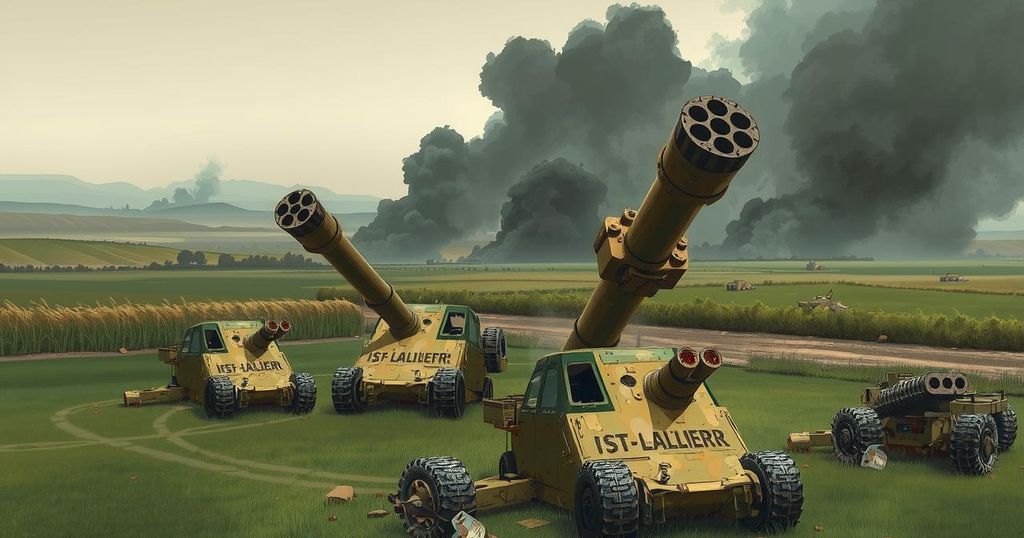Ukraine Dismantles North Korean Howitzers in Kursk Region
Ukrainian forces have destroyed three North Korean howitzers in the Kursk region, as reported by the Unmanned Systems Forces Command. These artillery systems were part of Russian military aid from North Korea. This incident marks the second successful strike against these howitzers, underscoring ongoing tensions and military engagement in the Russo-Ukrainian conflict.
Ukrainian forces reportedly destroyed three North Korean howitzers located in the Kursk region, as stated by the Unmanned Systems Forces Command. These artillery systems had been supplied to the Russian army by North Korea and were concealed within a forest area, having been equipped with protective ‘grills’ to safeguard against FPV drones.
The destruction of these howitzers followed successful drone operations that identified the Koksans before deploying Ukrainian rocket artillery. This assault utilized high-explosive and cluster munitions, marking the second significant strike against these artillery systems in the ongoing Russo-Ukrainian conflict.
The M1978 Koksan, which constitutes the longest-range artillery in the North Korean arsenal, features a 170-mm gun and can reach targets up to 60 km away. Originally designed to threaten Seoul from the north, their deployment by Russian forces aims to address substantial artillery losses suffered during the conflict.
As of March 18, reports indicate that 76 combat engagements occurred between Ukrainian and Russian forces, with fighting continuing on several fronts, particularly escalating in the Kursk region as per statements from the Ukrainian General Staff.
In summary, Ukrainian forces have effectively neutralized three North Korean howitzers in the Kursk region, showcasing their operational success against Russian military efforts. The M1978 Koksan’s deployment highlights the challenges faced by the Russian Armed Forces in compensating for artillery losses as the conflict persists. With combat intensity continuing in various regions, the situation remains dynamic and critical in the ongoing war.
Original Source: www.ukrinform.net




Post Comment